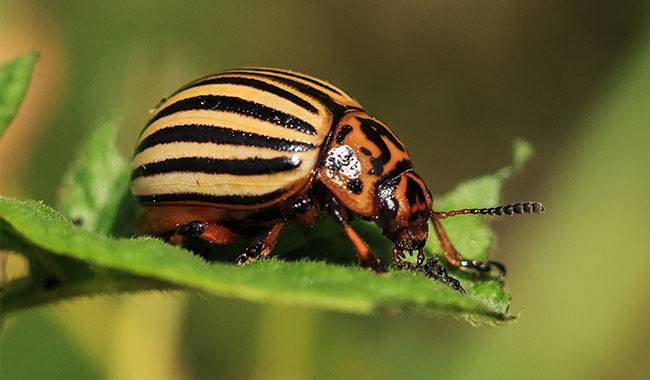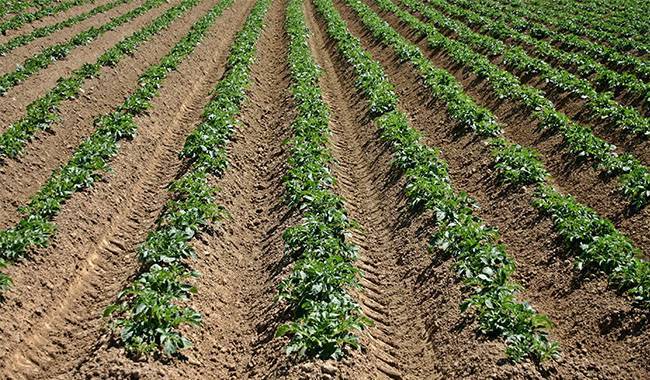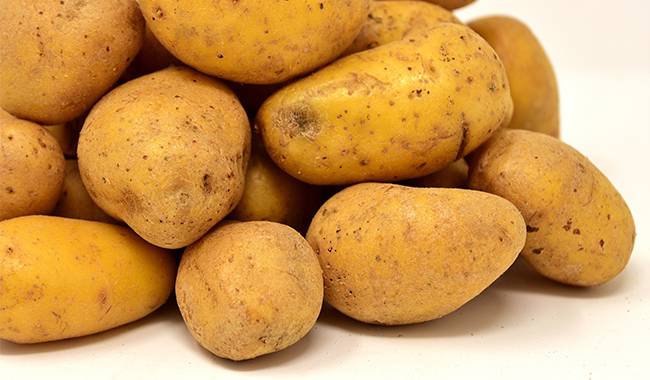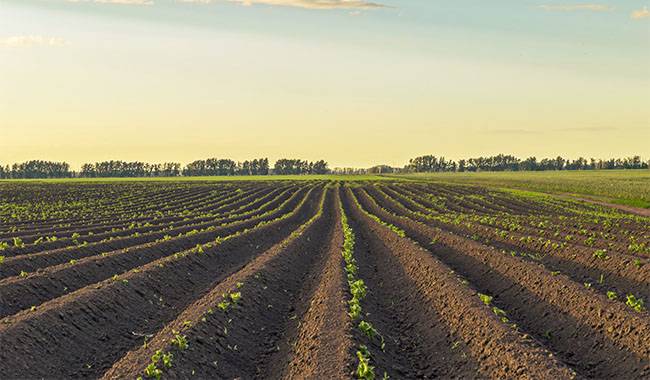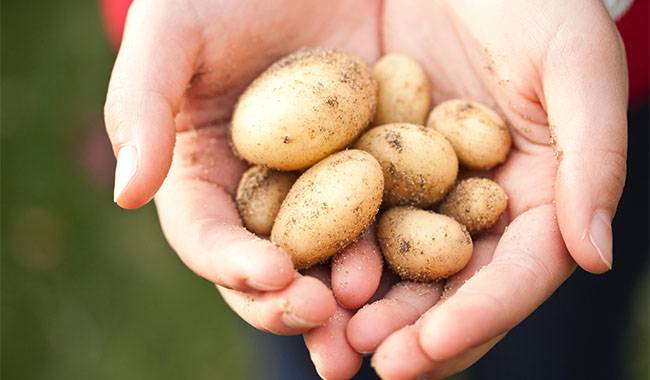
Why some Potatoes are so small? Many people still measure the success of a season by the harvest of potatoes. But the main root vegetable on the table, where planting and harvesting have become almost a ritual, has often disappointed in recent seasons. Small tubers and hollow clumps have become almost the norm. Climate change affects even potatoes.
But one should not just blame the temperature; a combination of prolonged drought and excessive rainfall has led to poor yields. Soil preparation, selection of varieties and planting materials, and care have as much influence on crop yield as purely objective situations.
EACH CROP FAILS IN ITS OWN WAY
Few gardening disappointments are more frustrating than a poor potato crop. Even with modern technology, potatoes require an “investment” of time and effort.
And you want the rewards …… Whether you grow a humble bed of your own root crop or potatoes take up so much space, there is enough for the whole family, friends, and acquaintances to enjoy. The disappointment of small, misshapen potatoes instead of beautiful, healthy tubers is always just as strong.
There is only one way to correct this, to prevent future failures, to prevent new problems – a comprehensive analysis. It is worth considering where exactly the mistakes were made throughout the “potato year”. But you should always consider the respective characteristics of your garden, soil, and variety.
But the reasons for a successful or unsuccessful potato season will always be different for each plot. Even the smallest change in cultivation methods can change the results. So be sure to try these on yourself when analyzing the special “spots” in potato cultivation.
OBJECTIVE FACTORS OF “NON-POTATO” YEARS
Before looking for your own technical and methodological failures in cultivation, it is worthwhile to blame the variety and its characteristics and to analyze what unfavorable factors are facing cultivation.
After all, the quantity, quality, and size of tubers can also be negatively affected by external factors beyond our control: 1.
- abnormal temperatures at the time of planting
- drought, especially during the period of topping and active tuber growth
- Excessively high or low summer temperatures, including unusual daily variations.
- excessive rainfall during the first half of the summer.
- spread of pests and diseases to adjacent plots.
It is impossible to fully predict what will happen in the coming year. However, it is possible and necessary to “reinsurance” against climatic surprises and stabilizes conditions to ensure at least a partially bumper crop.
Dividing the planting area into early, mid and late-season potato varieties and not planting all potatoes at the same time will help you “adapt to the time of year”. This method ensures that even in the least successful years, some of the potatoes will have a large crop.
It compensates for all kinds of weather by avoiding many problems through repeated hoeing – which stabilizes the soil and protects the tubers – and simple mulching.
QUALITY OF PLANTING MATERIALS AND CROP ROTATION
There is nothing but disappointment if you grow potatoes randomly with leftover food supplies or tubers from the supermarket. Although many gardeners are still growing potatoes from “leftovers”, the current climate change makes it difficult to expect a good crop.
The better the planting material, the better the quality and the healthier it is, the less risk of getting unusable or small tubers at digging time.
Whenever it comes to potato varieties, there are several rules for selecting tubers for planting.
- Carefully discard all potatoes affected by pests, rot, mold, and other diseases.
- Avoid planting tubers that are not green.
- Try to keep the best potatoes for planting (collected from healthy potato varieties with large and evenly spaced tubers) or use special seed potatoes.
- When choosing varieties, pay attention to their zonality and resistance, adaptability to local climate, and disease resistance.
It is very important for any potatoes that all pre-planting procedures are carried out correctly and in time to prepare the tubers for planting – from processing to germination.
For potatoes, which are allocated the largest area in vegetable gardens, people often forget about crop rotation. If possible, potatoes are “moved” every year, when the size of the vegetable garden allows it.
This is a standard crop rotation. In extreme cases, the potato planting site should be changed at least every 3 years, allowing the plot to “rest” for 3-4 years. For potatoes organize a change with rotations of cabbage, cucumbers, beans, carrots, beets, salads, onions, spicy herbs.
But there are two other key rules of potato rotation, the violation of which can lead to shallow tubers and poor yields:
- Change varieties regularly, at least every 4-5 years.
- It is not worth planting the same variety in the same place the following year.
- before and after potatoes “unacceptable” sunflowers and all nightshades.
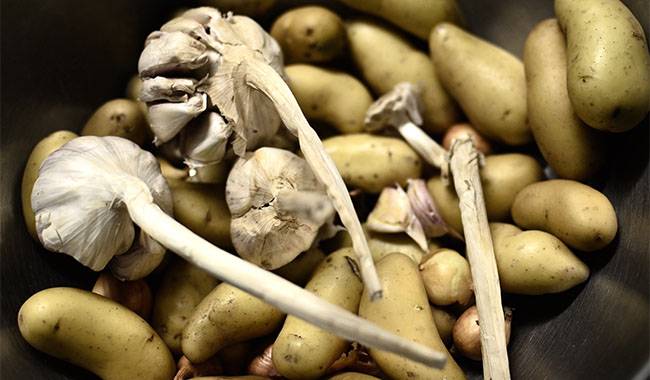
ALMOST ALWAYS THE SOIL IS TO BLAME
The following rule is even more relevant for potatoes: the quality of the soil and the quality of the preparation have a “repulsive” effect on the quality of the harvest. The seedbed, regardless of its size, must be prepared well in advance, from autumn, and the precursor plants must not be harvested too slowly. Neglecting this requirement will not yield good results.
The soil for growing potatoes must be breathable, permeable, loose, and light in texture. It must also be very fertile, with a high organic matter content and an active biological environment. Beneficial microorganisms and worms that convert organic matter into nutrients are often underestimated. But also the yield depends largely on them.
If the soil texture or fertility differs from the “potato ideal”, it is the main reason for poor yields. Soils that are too dense, too heavy, too poor, and too wet are the main factors for potato failure, but this is not a phrase. Any soil can be improved starting in the fall by choosing the ideal planting and cultivation method.
The standard preparation of poor potato soil includes.
- clearing the site of debris and weeds.
- digging or loosening the soil.
- applying fertilizer and adding chemical fertilizer, ash, dolomite, and bone meal.
- Watering with biological agent solution.
- Mulching.
Sowing green manure on potato beds is one of the simplest and most effective methods of soil improvement.
Restoration and maintenance of potato soil fertility require a complex approach. It should be remembered that potatoes are extremely taxing on the soil and they require a large supply of nutrients in order to form large, healthy tubers. Mature humus, compost, and, in extreme cases, well-rotted manure are the best helpers.
The amount of organic matter brought in is usually about 5 kg per square meter of planting area. Mineral fertilizers can be used on their own, considering their impact on quality, environmental friendliness, and future crop performance. When applying fertilizers, it is important to remember that too much nitrogen is not good for potatoes. And the excessive application of mineral fertilizers can lead to the rapid growth of greens and is detrimental to tuber growth.
PLANTING MISTAKES
For shallow tubers, poor germination, setting miniature, undeveloped and flabby tubers can also lead to violation of the elements of agronomy.
Potatoes do not like:
- deep planting, in which they may not germinate, or sprouts may have difficulty breaking the soil and weakening.
- non-uniform, different depths of planting, when on plots, some potatoes are planted deeper, while others – almost shallow (the depth of the bed must be the same).
- surface planting, when the tubers are barely covered with soil and turn green.
When choosing a planting method, it is worth remembering that sandy soils require other methods than loamy soils, which differ from heavier and wetter soils. Methods such as trenching and ridge removal should be chosen specifically for your site, analyzing all the disadvantages and risks.
LACK OF BASIC CARE
Potatoes are grown and dug, but here everything in between the “popular procedures” is often neglected. The care of potatoes is elementary. Most seasons, they don’t need any attention at all.
But if you “deny” potatoes even basic procedures, you won’t succeed. And it’s not just a matter of watering. Of course, if the drought is unusual, especially in the first half of the summer, excessive drying of the soil can cause a large part of the harvest to be lost. But mainly potatoes need other attention.
If potatoes are not weeded after weeding, during the active vegetative period, and at the beginning of flowering, you will not get a good yield. If the soil is mulched in time, the potatoes will not notice the intense heat.
In addition, the condition of the shrubs must be constantly monitored, preventive treatments must be carried out, the soil must be improved, and nematodes, bears, and other pests must be controlled. After all, not only timely fight against the ubiquitous potato beetles and phytopathogenic bacteria prevention but, of course, no one cancels and affects the harvest of potatoes.




